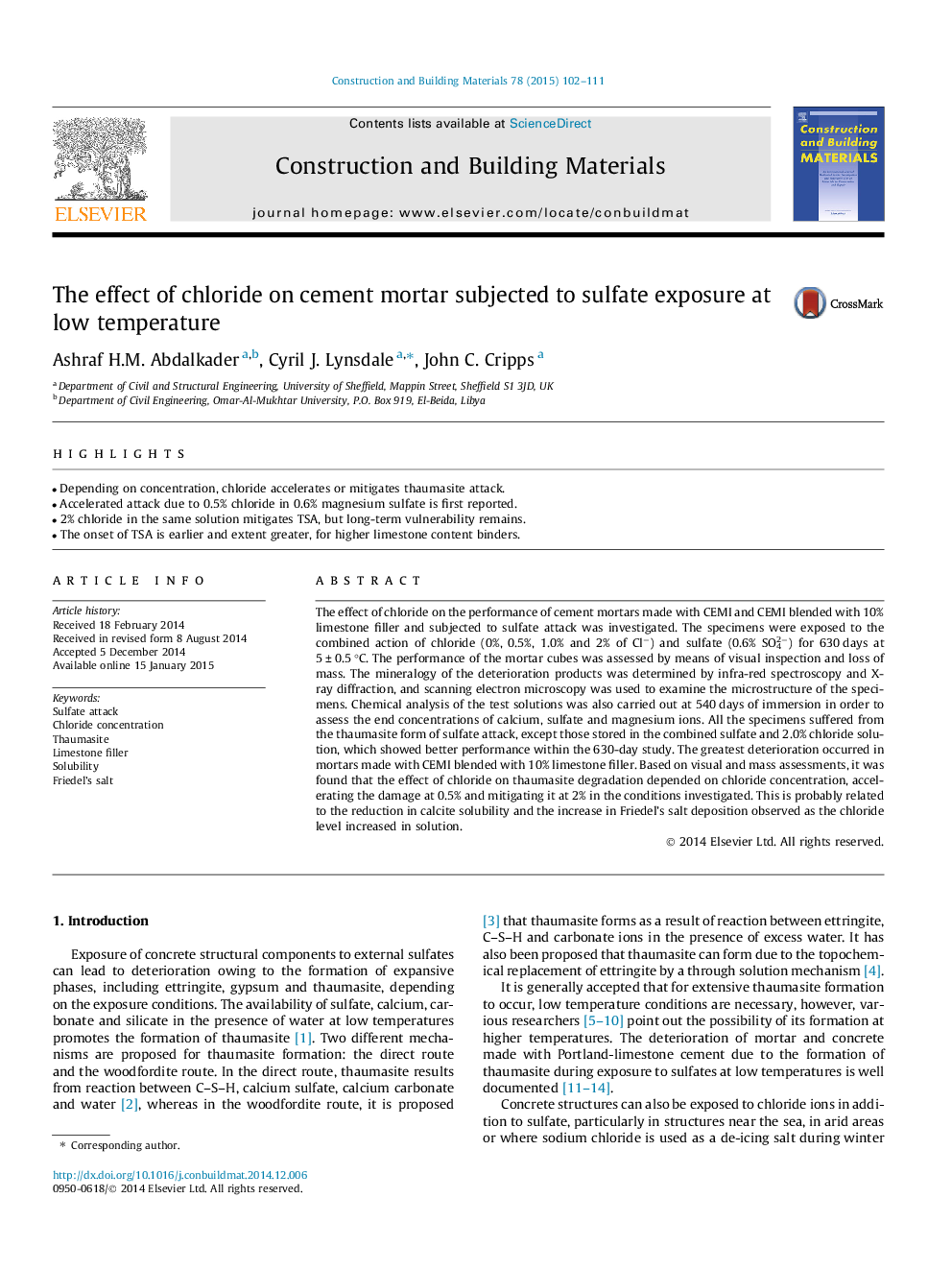| کد مقاله | کد نشریه | سال انتشار | مقاله انگلیسی | نسخه تمام متن |
|---|---|---|---|---|
| 257098 | 503577 | 2015 | 10 صفحه PDF | دانلود رایگان |
• Depending on concentration, chloride accelerates or mitigates thaumasite attack.
• Accelerated attack due to 0.5% chloride in 0.6% magnesium sulfate is first reported.
• 2% chloride in the same solution mitigates TSA, but long-term vulnerability remains.
• The onset of TSA is earlier and extent greater, for higher limestone content binders.
The effect of chloride on the performance of cement mortars made with CEMI and CEMI blended with 10% limestone filler and subjected to sulfate attack was investigated. The specimens were exposed to the combined action of chloride (0%, 0.5%, 1.0% and 2% of Cl−) and sulfate (0.6% SO42−) for 630 days at 5 ± 0.5 °C. The performance of the mortar cubes was assessed by means of visual inspection and loss of mass. The mineralogy of the deterioration products was determined by infra-red spectroscopy and X-ray diffraction, and scanning electron microscopy was used to examine the microstructure of the specimens. Chemical analysis of the test solutions was also carried out at 540 days of immersion in order to assess the end concentrations of calcium, sulfate and magnesium ions. All the specimens suffered from the thaumasite form of sulfate attack, except those stored in the combined sulfate and 2.0% chloride solution, which showed better performance within the 630-day study. The greatest deterioration occurred in mortars made with CEMI blended with 10% limestone filler. Based on visual and mass assessments, it was found that the effect of chloride on thaumasite degradation depended on chloride concentration, accelerating the damage at 0.5% and mitigating it at 2% in the conditions investigated. This is probably related to the reduction in calcite solubility and the increase in Friedel’s salt deposition observed as the chloride level increased in solution.
Journal: Construction and Building Materials - Volume 78, 1 March 2015, Pages 102–111
